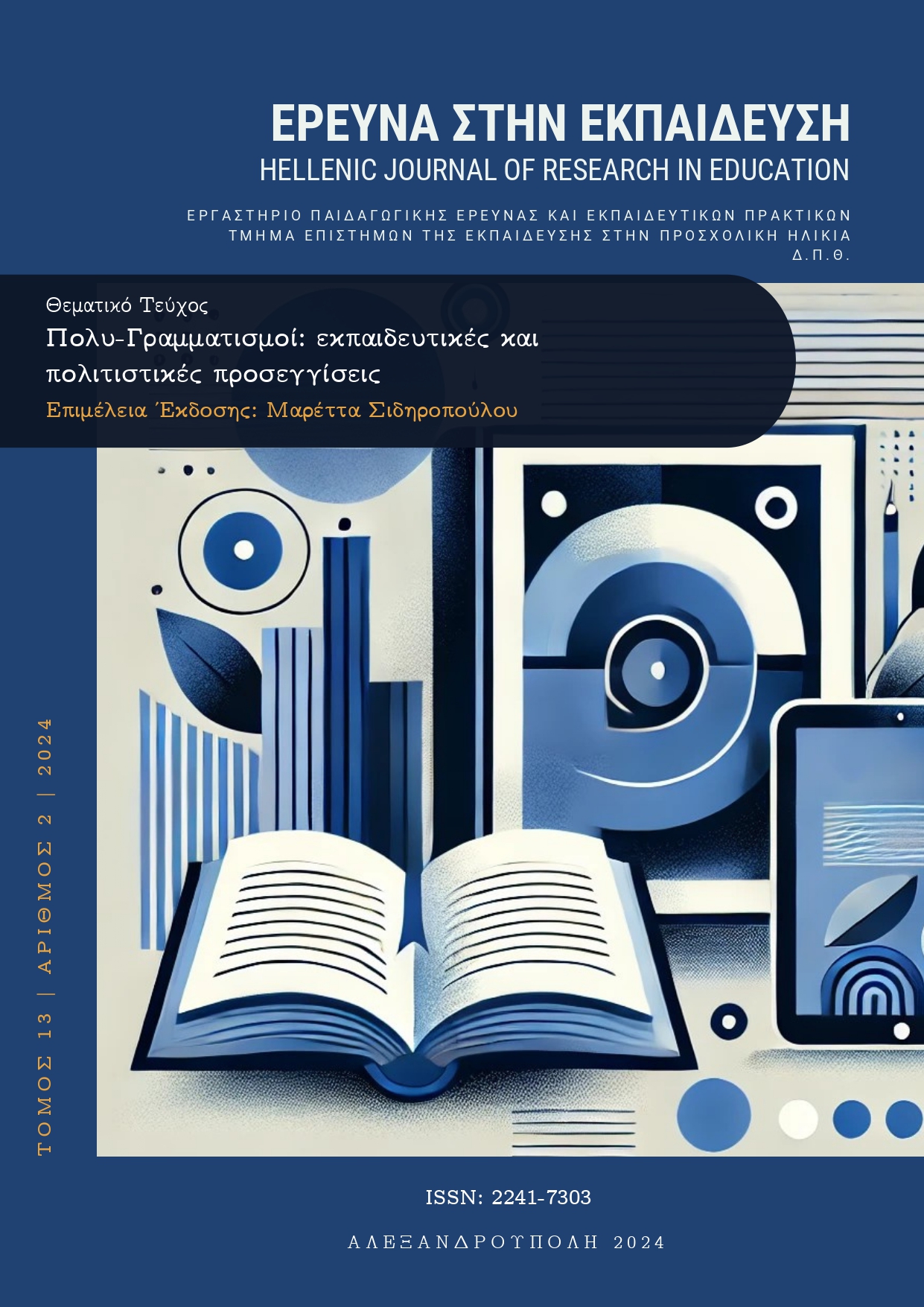Emergent Multiliteracies: Towards an Understanding of the Theory and Pedagogical Practice

Abstract
This paper explores the concept of emergent multiliteracies in early childhood education, delving into its theoretical underpinnings and pedagogical implications. Drawing upon the seminal work of scholars such as Cope & Kalantzis (2009), the New London Group (1996), and Arvanitis (2009; 2013), the paper examines how multiliteracies offer a transformative framework for nurturing holistic development in young learners. Emergent multiliteracies reflect the dynamic early and evolving stages of literacy development in which young children engage in diverse meaning-making activities across multiple modes and contexts. Through a detailed analysis of knowledge processes, including experiencing, conceptualising, analysing, and applying knowledge, the paper highlights the importance of hands-on exploration, collaborative problem-solving, and creative expression in early childhood education. Furthermore, the paper underscores the significance of flexibility, inclusivity, and cultural appreciation in pedagogical practices, emphasizing the need to tailor approaches to meet the diverse needs and preferences of individual learners. Ultimately, the exploration of emergent multiliteracies offers a compelling vision for the future of early childhood language education, laying the foundation for lifelong learning and success in an increasingly complex and interconnected world.
Article Details
- How to Cite
-
Papadopoulos, I., & Bisiri, E. (2024). Emergent Multiliteracies: Towards an Understanding of the Theory and Pedagogical Practice. Hellenic Journal of Research in Education, 13(2), 74–90. https://doi.org/10.12681/hjre.37458
- Section
- Articles

This work is licensed under a Creative Commons Attribution-NonCommercial-ShareAlike 4.0 International License.
Authors who publish with this journal agree to the following terms:
- Authors retain copyright and grant the journal right of first publication with the work simultaneously licensed under a CC-BY-NC-SA that allows others to share the work with an acknowledgement of the work's authorship and initial publication in this journal.
- Authors are able to enter into separate, additional contractual arrangements for the non-exclusive distribution of the journal's published version of the work (e.g. post it to an institutional repository or publish it in a book), with an acknowledgement of its initial publication in this journal.
- Authors are permitted and encouraged to post their work online (preferably in institutional repositories or on their website) prior to and during the submission process, as it can lead to productive exchanges, as well as earlier and greater citation of published work (See The Effect of Open Access).


